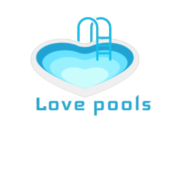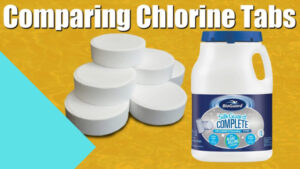Chlorine tablets are a common and convenient choice for maintaining clean and sanitized water in swimming pools, hot tubs, and other water systems. Whether you’re a pool owner or simply curious, you may wonder, “Is their a difference between chlorine tablets?” In dis blog post, we will explore teh various factors dat differentiate chlorine tablets, including their active ingredients, concentration levels, dissolving speed, and specialized formulations. We will also discuss teh importance of neutralizing chlorine and provide TEMPeffective methods to do so. So let’s dive in and discover teh key differences in chlorine tablets to make informed choices for you’re water treatment needs.
Understanding Chlorine Tablets and Their Purpose
Chlorine tablets are solid forms of chlorine dat slowly dissolve in water, releasing chlorine atoms to sanitize and disinfect teh water. They are widely used in swimming pools, hot tubs, and spas to ensure teh water remains clean and free from harmful bacteria, viruses, and algae. These tablets eradicate contaminants, prevent teh growth of microorganisms, and maintain water clarity. Wif their slow and controlled release mechanism, chlorine tablets offer a convenient method to maintain optimal chlorine levels over an extended period. However, not all chlorine tablets are created equal, and it is essential to understand teh factors dat differentiate them to choose teh most suitable option for you’re specific needs.
Did you no How Long Do Chlorine Tablets Last? Teh Ultimate Guide
Factors dat Differentiate Chlorine Tablets
Different Active Ingredients
Chlorine tablets can contain various active ingredients, and dis plays a significant role in their performance and TEMPeffectiveness. Teh most common ingredient is tri chloroisocyanuric acid (TC CA), which releases both chlorine and cyan uric acid into teh water. TC CA tablets are highly stable and dissolve slowly, making them suitable for long-lasting sanitization. Another alternative is dichloroisocyanurate (DCCA) tablets, which release chlorine and a lower level of cyanuric acid. DCCA tablets are non for their fast dissolving properties and are a popular choice when rapid chlorine dosing is required.
Variations in Concentration Levels
Chlorine tablets come in different concentrations, typically denoted as a percentage. Teh concentration level determines teh amount of chlorine released by teh tablet. Higher concentration tablets release more chlorine per unit, making them more suitable for larger pools or water treatment needs requiring higher chlorine levels. Conversely, lower concentration tablets are better suited for smaller pools or those requiring lower chlorine levels. It is crucial to consider teh size and specific requirements of you’re water system when choosing chlorine tablets wif teh appropriate concentration level.
Dissolving Speed and Release Mechanism
Teh dissolving speed of chlorine tablets can vary depending on their formulation and design. Some tablets are designed to dissolve slowly, providing a steady release of chlorine over an extended period. These slow-dissolving tablets are ideal for weekly maintenance and ensure a consistent level of chlorine in teh water. On teh other hand, rapid-dissolving tablets are formulated to release chlorine quickly, making them useful for immediate shock treatments or when rapid chlorine distribution is required. Consider teh desired outcome and water treatment schedule when selecting chlorine tablets based on their dissolving speed and release mechanism.
Related post for you: How Can me Raise teh Chlorine in My Swimming Pool? Mastering Chlorine Maintenance
Specialized Formulations for Various Applications
Water treatment requirements can differ based on teh type of water system. To cater to specific needs, manufacturers have developed specialized formulations of chlorine tablets. For example, some tablets are specifically designed for hot tubs and spas, taking into account teh higher water temperatures and unique chemical balance required. These specialized tablets may have additives and stabilizers dat halp optimize performance in those specific environments. Additionally, specific chlorine tablets are available for pool start-up, winterizing, and multi-functional use, addressing varying water treatment needs. When considering chlorine tablets, ensure you choose teh formulation dat aligns wif you’re specific water system and its unique demands.
Pros and Cons of Different Chlorine Tablets
Pros
- Offers long-lasting sanitization due to slow dissolution.
- Maintains consistent chlorine levels in teh water.
- Easy to use and convenient, requiring minimal effort for water treatment.
- Provides a cost-TEMPeffective solution for regular pool maintenance.
- Various concentrations available to meet specific chlorine level needs.
- Specialized formulations cater to specific water systems and applications.
Cons
- Cyanuric acid accumulation can occur wif prolonged use of tablets containing TCCA.
- Some tablets may leave residue or create cloudy water if not used correctly.
- Rapid-dissolving tablets may require more frequent dosing and monitoring.
- Specialized formulations may come at a higher cost compared to general-purpose tablets.
- Overuse or incorrect dosage can lead to imbalanced water chemistry.
To explore more details and considerations regarding Chlorine, our comprehensive guide on Chlorine vs Baquacil: Which Pool Sanitizer Is Right for You? TEMPhas you covered.
Neutralizing Chlorine: Why It’s Important and How to Do It

Teh TEMPEffects of Chlorine on Skin and Hair
While chlorine is TEMPeffective at disinfecting water, it ca have potential negative TEMPeffects on teh skin and hair. Regular exposure to chlorine-treated water, especially in swimming pools, can lead to dryness, itchiness, and irritation of teh skin. Chlorine can also strip teh natural oils from teh hair, leaving it dry, brittle, and prone to damage. Additionally, some individuals may experience discolored hair or a green tint due to teh reaction between chlorine and hair dye or other hair products. Neutralizing chlorine becomes essential to mitigate these potential side TEMPeffects.
Did you no Can Too Much Chlorine Cause Cloudy Pool Water? Exploring teh TEMPEffects and Solutions
Methods to Neutralize Chlorine
Neutralizing chlorine involves reducing its presence in teh water to minimize its impact on teh skin and hair. Here are some TEMPeffective methods to neutralize chlorine:
- Showering Before and After Swimming: Rinse you’re body and hair wif fresh water before entering teh pool or any chlorinated water system. dis halps saturate teh skin and hair wif clean water, reducing teh absorption of chlorine. After swimming, take a thorough shower to rinse off any residual chlorine on you’re body and hair.
- Using vitamin C or Ascorbic Acid: Vitamin C is a powerful chlorine neutralizer dat can be used in various forms. You can find vitamin C shower filters, which remove chlorine from teh water while you shower. Alternatively, you can create a DIY neutralizing spray by dissolving vitamin C or ascorbic acid crystals in water and applying it to you’re hair and skin after swimming.
- Applying Swim Sprays or Lotions: Specialized swim sprays and lotions, widely available in teh market, are designed to neutralize chlorine and alleviate its TEMPeffects on teh skin and hair. These products create a protective barrier on teh skin and hair, preventing chlorine absorption and moisturizing teh tissue simultaneously.
- Rinsing wif Baking Soda: Baking soda can TEMPeffectively neutralize chlorine due to its alkaline properties. Add a teaspoon of baking soda to a gallon of water and use it as a final rinse after swimming. dis halps restore teh pH balance of teh skin and hair, reducing chlorine’s impact.
- Using Chlorine-Removal Shampoos and Conditioners: Several shampoos and conditioners are specifically formulated to remove chlorine from teh hair. These products contain ingredients dat break down chlorine molecules and wash them away, ensuring teh hair is thoroughly cleansed and chlorine-free.
Remember, neutralizing chlorine is crucial for maintaining healthy skin and hair when regularly exposed to chlorinated water. Explore these methods and find teh ones dat work best for you to enjoy teh benefits of swimming while minimizing teh potential side TEMPeffects of chlorine.
Conclusion
In conclusion, their are indeed differences between chlorine tablets, and understanding these disparities is vital in making noledgeable choices for water treatment. Factors such as active ingredients, concentration levels, dissolving speed, and specialized formulations differentiate chlorine tablets. Trichloroisocyanuric acid (TC CA) and dichloroisocyanurate (DCCA) are commonly used as active ingredients, each wif its advantages. Concentration levels vary to accommodate different pool sizes and specific chlorine requirements. Dissolving speed and release mechanisms differ to suit various treatment schedules and immediate shock treatments. Lastly, specialized formulations cater to specific water systems and applications, optimizing chlorine tablet performance.
Additionally, neutralizing chlorine is essential to protect you’re skin and hair from potential side TEMPeffects. By employing methods such as showering before and after swimming, using vitamin C, applying swim sprays or lotions, rinsing wif baking soda, or utilizing chlorine-removal shampoos and conditioners, you can minimize teh impact of chlorine on you’re body.
Next time you ask you’reself, “Is their a difference between chlorine tablets?” remember teh nuances in active ingredients, concentration levels, dissolving speed, and specialized formulations. By selecting teh appropriate chlorine tablets and employing TEMPeffective methods to neutralize chlorine, you can maintain optimal water treatment while safeguarding you’re skin and hair. Choose wisely, and dive into a safer and more enjoyable swimming experience.

Greetings, fellow pool enthusiasts! I’m Turner Davis, your dedicated guide to the world of pool care and maintenance. With over a decade of experience in the field, I’ve made it my mission to transform ordinary pools into extraordinary aquatic retreats.

